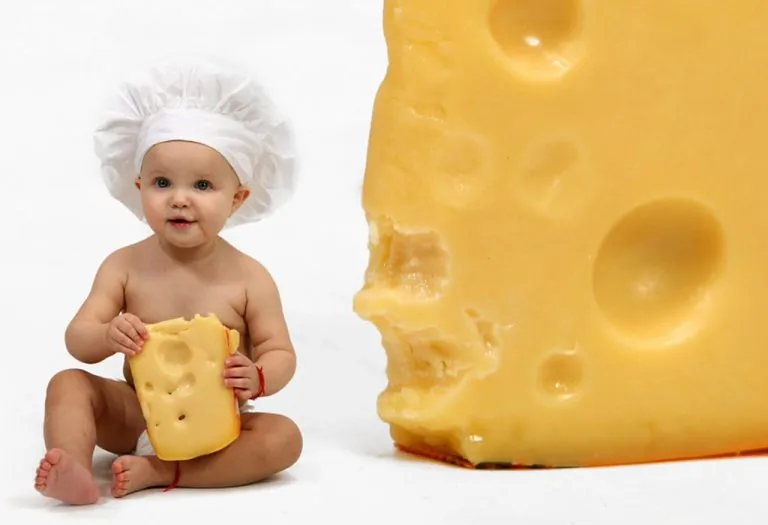When Do Babies Stop Drinking Formula – The Right Age for Transition
The consumption of formula milk by children under the age of one has been phased out, and they may now drink whole milk. Toddlers are not always willing to drink milk; if this is the case with your child, do not force her to drink it. Although toddlers require the minerals found in milk, namely calcium and protein, you can obtain these nutrients from various other sources. It is common for babies between the ages of 9 and 12 months to lose interest in bottle feeding, making this an excellent time to begin weaning your baby from the bottle. Pediatricians and pediatric dentists recommend newborns to be weaned off the bottle by 12 months, but no later than 15 months. Like all others in child-rearing, the following rule is not set in stone and may change depending on the situation.
Numerous signs point to a fast resolution concerning the queries related to how long do babies need formula. Let’s learn all about transitioning from formula to milk!
Should Babies Transition to Cow Milk?
The American Academy of Pediatrics suggests giving a combination of solid foods and breastmilk or formula (or both) to infants under 12 months of age (1). The experts advocate introducing whole cow’s milk into the diet after one year. Following are the health-related issues that a toddler might face owing to transitioning a baby older than 12 months to whole milk:
- Cow’s milk deficits in iron, vitamin C, and other minerals essential for babies’ growth and development.
- It contains an excessive amount of proteins and minerals for your baby’s kidneys to process, as well as an insufficient amount of nutrients for growth and development.
- Cow’s milk may increase the risk of intestinal bleeding in your child if they are under the age of 12 months at the time of first solid food introduction.
- In addition to being difficult for babies to digest, cow’s milk’s high protein and mineral content place a significant strain on a newborn’s developing renal system.
When Can Your Baby Start Switching From Formula to Milk?
As a general rule, experts recommend weaning your child off of formula and switch to full-fat dairy milk when they are approximately 12 months old. Only specific considerations should be considered when transitioning a baby more aged than 12 months to whole milk. One-year-olds require 16 ounces of milk every day to grow and develop properly. Most infants fed formula are ready to transition from formula to whole cow’s milk on average one year after birth. If your child was born prematurely or breastfed with soy formula, you should immediately seek medical attention.
How to Transition From Formula to Milk?
Switching from formula to milk is an important milestone in your child’s development, typically occurring around their first birthday. However, it’s essential to approach this transition thoughtfully to ensure your child’s nutritional needs are met and to make the process smooth for both of you.
1. Timing the Transition
The American Academy of Pediatrics recommends introducing whole cow’s milk (or an appropriate alternative) at around 12 months of age (2). Before this, a baby’s digestive system may not be ready to process cow’s milk effectively. Start by replacing one formula feeding with milk and gradually increase the amount over a week or two. This slow transition helps your child adjust to the new taste and texture while minimizing digestive discomfort.
2. Choosing the Right Milk
Whole milk is typically recommended for toddlers under two years old because it provides the necessary fat content for brain development (3). If your child has a milk allergy or intolerance, consult your pediatrician for alternatives like fortified soy milk or other plant-based options. Avoid low-fat or skim milk until your child is older, as they need the calories and nutrients from whole milk for proper growth. Always ensure the milk is pasteurized and safe for consumption.
Signs That Your Baby Is Ready to Transition Off Formula
Here are some signs that your baby may be ready to transition from formula to milk:
- Age-Appropriate: Your baby is around 12 months old, as most pediatricians recommend waiting until this age to introduce cow’s milk.
- Eating Solid Foods Well: Your baby is consuming a variety of solid foods and getting most of their nutrition from meals rather than formula.
- No Digestive Issues: Your baby shows no signs of lactose intolerance or milk allergies, such as diarrhea, vomiting, or rashes after consuming dairy products.
- Interest in Cow’s Milk: Your baby shows curiosity about the milk you or others are drinking and may try to reach for it.
- Reduced Interest in Formula: Your baby is drinking less formula or seems less interested in bottle feedings.
- Good Overall Health: Your baby is growing well, meeting developmental milestones, and has no underlying health concerns that might delay the transition.
Signs That a Baby Is Not Ready to Transition Off Formula
Here are some signs that your baby may not be ready to transition from formula to milk (4):
- Under 12 Months Old: Babies under one year typically lack the digestive maturity to process cow’s milk effectively.
- Digestive Issues: Signs like diarrhea, constipation, or vomiting after trying cow’s milk may indicate intolerance or an immature digestive system.
- Allergic Reactions: Symptoms such as rashes, hives, swelling, or breathing difficulties after consuming dairy could signal a milk allergy.
- Poor Weight Gain: If your baby is not gaining weight appropriately, they may still need the specific nutrients provided by formula.
- Reliance on Formula for Nutrition: If your baby is not eating enough solid foods and still depends heavily on formula for their primary nutrition.
- Fussiness or Refusal: Your baby may refuse cow’s milk or become fussy after drinking it, indicating they’re not ready for changing from formula to milk.
- Developmental Delays: If your baby has not yet reached key developmental milestones, they may need the tailored nutrition of formula for a bit longer.
Which Is More Nutritious – Formula or Whole Milk?
Experts have not identified convincing evidence that toddler formula is a healthier option than whole milk when it comes down to it. Parents often express at what age do babies stop drinking formula. The vast majority of people are concerned about the transition away from the nutritionally dense benefits of breast milk or infant formula, which they believe to be detrimental.
Consequently, toddler formula contains significantly higher vitamins, minerals, and nutrients than breast milk and infant formula, making it an excellent substitute for picky eaters who may be nutritionally deprived. The fact that cow’s milk contains a high concentration of protein and minerals that can be difficult for your baby’s developing kidneys to process is something you should keep in mind.
As a result of its low concentration of iron, vitamin C, and other nutrients, cow’s milk is unsuitable for consumption by nursing mothers and their infants. Finally, cow’s milk is deficient in the essential fats required for the growth of newborn babies. Increasing solid food intake one ounce at a time while decreasing milk or formula intake is essential.
How to Wean Baby Off Formula?
Weaning your baby off formula is a gradual process that requires patience and attention to their nutritional needs. By following a structured approach, you can ensure the shift is smooth and comfortable for both you and your baby (5).
1. Introduce Cow’s Milk Gradually
When switching infant formula to milk, begin by mixing a small amount of whole milk with formula, gradually increasing the ratio of milk to formula over 1-2 weeks. This helps your baby adjust to the new taste and texture without causing digestive discomfort.
2. Replace One Feeding at a Time
Start by replacing one formula feeding with milk, such as the midday bottle. Once your baby adjusts, replace additional feedings one by one until they are fully transitioned to milk.
3. Offer Milk in a Cup
Encourage your baby to drink milk from a sippy cup or straw cup instead of a bottle. This helps them develop independent drinking skills and reduces reliance on bottle feeding.
4. Ensure a Balanced Diet
As you reduce formula, make sure your baby is eating a variety of solid foods to meet their nutritional needs. Include iron-rich foods, fruits, vegetables, and proteins to support their growth.
5. Monitor for Reactions
Watch for signs of lactose intolerance or milk allergies, such as digestive issues, rashes, or fussiness. If any concerns arise, consult your pediatrician for guidance.
6. Be Patient and Flexible
Every baby is different, so adjust the pace of weaning based on your child’s readiness and comfort. If they resist, take a step back and try again in a few days or weeks.
What Is the Difference Between Weaning Off From Breast Milk and Formula?
Transitioning from formula is not the same as transitioning from breast milk. Breastfeeding doesn’t need to end when your baby reaches their first birthday. Many breastfed children continue nursing well into their toddler years, and experts often recommend breastfeeding until at least age two if possible. Beyond nutrition, breastfeeding can also provide comfort and emotional support for your toddler.
On the other hand, formula is no longer necessary after your baby turns one, as they can obtain all the nutrients they need from cow’s milk and solid foods. If you’re combining breastfeeding with formula, you can continue breastfeeding while replacing formula with cow’s milk served in a cup.
Another key difference between weaning from breast milk and formula is that formula-fed babies may find it easier to switch to a sippy cup or toddler cup since they’re already accustomed to drinking from a bottle. If your baby is still nursing, you can try offering expressed breast milk in a cup to help them get used to drinking from it, making the eventual transition to cow’s milk smoother.
Best Milk Alternatives for Toddlers
Your child’s bones require specific vitamins and minerals to develop correctly, such as vitamin D and calcium. Vitamin D can be found in pasteurized cow’s milk (plain whole milk) and enriched soy beverages that have the appropriate warning label attached to them. In the United States, most cow’s milk sold in grocery stores has been fortified with vitamin D to increase its nutritional value. Vitamin D and calcium are abundant in dairy products such as cow’s milk and fortified soy beverages.
Whole milk is one of the most recommended drinks for toddlers aged one and older, whereas non-fat (skim) or low-fat (1% fat) milk is recommended for children two years and older. Choose ones that are unflavored or have a mild flavor. You may add sugars to many products, including flavored cow’s milk and fortified soy beverages.
Soy, coconut, rice, and nut (cashew, almond) milk are among the most popular milk substitutes today. Hemp milk, oat milk, and milk made from pea protein are examples of dairy alternatives to cow’s milk that are available (2). The majority of these can be found in cartons next to the cow’s milk in your refrigerator, but some can also be found in boxes in the beverage section of your local grocery store, depending on your location.
If possible, opt for ones that are flavorless or have a mild flavor. There are many products to which sugar can be added, including flavored cow’s milk and fortified soy beverages. Your child does not require any additional sugary treats.
Why Cow Milk Is Avoided Before Baby’s 12 Months?
The mother can breastfeed her child even if she is not using formula milk, as babies need this for the protein in their diet. Here is a list of issues faced by babies concerning the consumption of cow milk (6):
- When infants are exposed to cow’s milk before their first birthday, they are at an increased risk of being born anemic, getting diarrhea or vomiting, and developing an allergic reaction to the milk. The proteins in milk are more numerous than those in other milk products, such as yogurt.
- Cow’s milk is incredibly taxing on a newborn’s immature renal system due to its high protein and mineral content. It may result in severe sickness in situations of heat stress, fever, or diarrhea.
- Additionally, cow’s milk is deficient in iron, vitamin C, and other minerals necessary for babies’ growth and development.
- You should not give cow’s milk to a newborn until they reach the age of 12 months since it does not provide enough nutrition for your kid. When your infant is exclusively breastfed, they will need vitamin D supplements as well (or mostly breastfed).
FAQs
1. Can I delay the transition beyond 12 months?
Yes, you can delay the transition if your baby isn’t ready or if you prefer to continue formula for a bit longer. Some parents choose to extend formula use if their child is a picky eater or has specific nutritional needs. However, by 12 months, most babies can thrive on cow’s milk and solid foods, so delaying should be a decision made in consultation with your pediatrician.
2. What if my baby has a rare metabolic disorder?
For babies with metabolic disorders like galactosemia or phenylketonuria (PKU), transitioning to regular cow’s milk is not an option (7). These conditions require specialized formulas or milk alternatives that are free from specific components (e.g., lactose or phenylalanine). Always work closely with a pediatrician or metabolic specialist to determine the safest transition plan.
3. What if my baby refuses cow’s milk but loves cheese and yogurt?
Some babies may reject cow’s milk but happily consume dairy in other forms, like cheese or yogurt. If this happens, you can rely on these dairy products to meet their calcium and vitamin D needs while gradually introducing milk in small amounts. Alternatively, you can mix milk into smoothies or cereals to make it more appealing.
4. Is it safe to transition to milk if my baby has a history of severe reflux?
Babies with a history of severe reflux or gastrointestinal issues may need a more cautious approach when transitioning to cow’s milk. Some parents find that milk can exacerbate reflux symptoms. In such cases, a pediatrician may recommend starting with smaller amounts, using lactose-free milk, or delaying the transition until the baby’s digestive system matures further.
When it comes to their child’s health, new parents should take extra precautions by learning everything they can about their baby’s formula’s peculiarities to keep track of them and ensure that they do not pass the problems on to their children. By the time you’ve finished reading this article, you’ll most likely have a better understanding of what should be included in your infant’s formula and what should be avoided.
References/Resources:
1. Why Do Infants Need Baby Formula Instead of Cow’s Milk?; American Academy of Pediatrics; https://www.healthychildren.org/English/ages-stages/baby/formula-feeding/Pages/Why-Formula-Instead-of-Cows-Milk.aspx
2. Cow’s Milk Alternatives: Parent FAQs; American Academy of Pediatrics; https://www.healthychildren.org/English/healthy-living/nutrition/Pages/milk-allergy-foods-and-ingredients-to-avoid.aspx
3. Nutrition Guide for Toddlers; Nemours Kids Health; https://kidshealth.org/en/parents/toddler-food.html
4. Baby Steps: Tips to Transition From Formula to Milk; Cleveland Clinic; https://health.clevelandclinic.org/transition-from-formula-to-milk
5. Making the Switch to Cow’s Milk for 1-year-olds; Children’s Hospital of Philadelphia; https://www.chop.edu/news/making-switch-cow-s-milk-1-year-olds
6. When It’s Safe for Your Baby To Have Cow’s Milk; Cleveland Clinic; https://health.clevelandclinic.org/when-is-it-safe-to-give-cows-milk-to-my-baby
7. Galactosemia; Cleveland Clinic; https://my.clevelandclinic.org/health/diseases/24062-galactosemia
Also Read:
Cup Feeding to Baby
Causes of Baby Not Eating Food
When to Stop Breastfeeding a Baby
Was This Article Helpful?
Parenting is a huge responsibility, for you as a caregiver, but also for us as a parenting content platform. We understand that and take our responsibility of creating credible content seriously. FirstCry Parenting articles are written and published only after extensive research using factually sound references to deliver quality content that is accurate, validated by experts, and completely reliable. To understand how we go about creating content that is credible, read our editorial policy here.























